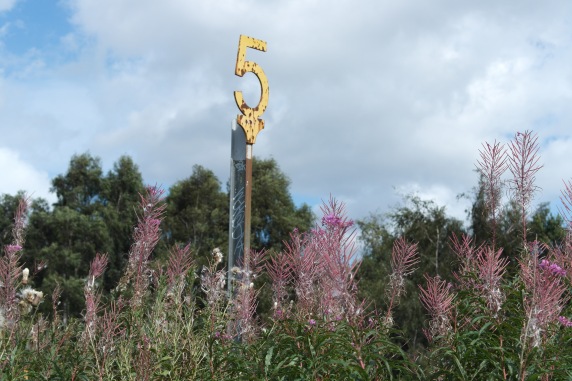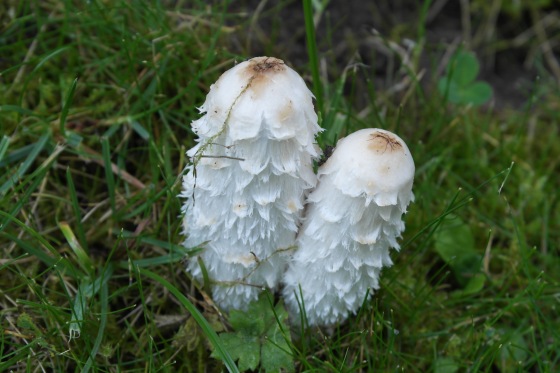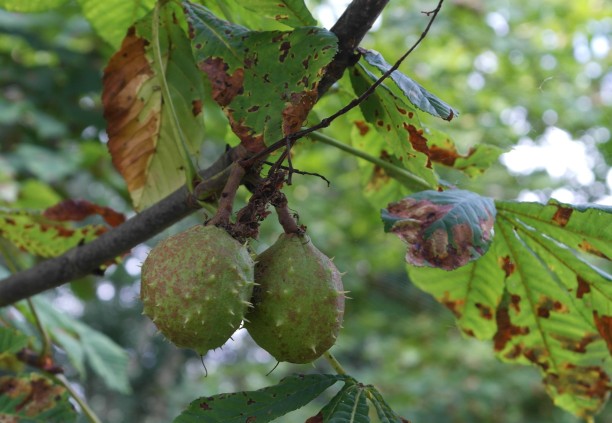
On the day after the equinox, on the day light tips into darkness, it is on this day that autumn arrives. It is my first day back at work and it has been a fortnight since I was in the park at 6am walking Winston. For the first time since early spring it is dark. Not completely. The sky is cobalt rather than indigo. Figures are vaguely recognisable. But it is still a shock to the system. Before we leave, a bat circles the air around us, the first I’ve ever seen in this park.

From a distance, it is clear that autumn has come. Great swathes of green trees are tinged with a touch of gold. There are beacon trees, flaming torches in the hedgerows, usually maples. But up close, the landscape is still remarkably green. Walking through the country park, it is the fireweed that offers the fieriest colour.

Last year gales ushered in the equinox. The old poplar in the park was rent by wind, an enormous limb blown to the ground. This year summer bleeds gently into the equinox and autumn steals in amid mist and rain. I had longed for September, but it passes in a flash, the last of the summer washed away by rain, wind, mist and frost. Spent raindrops form clear beads on hawthorns full of haws. A trio of blackbirds bathe in an enormous puddle. Raindrops dance the Flamenco. Fungi has blossomed on the damp bridleway. I count five species: more shaggy inkcaps than I have ever seen, a scatter of puffballs and others I can’t identify.
There is a different energy on a true autumn day. The air feels thinner. There is movement. Not only of the weather and the leaves, though that is part of it. The world is shedding, falling apart, but it’s a joyous shedding. And then there are those still autumn days full of gold, when the sun lights up trees and teasels from behind and makes rosehips glow. The dene is a riot of golds, reds and browns, overblown and overgrown, having a last chaotic burst before all the leaves are shed. The grass is scattered with leaves of a different kind: pages from a book, burnt around the edges, shedding words into the landscape.

And the new season has given me energy. I’ve submitted a dozen stories, revised a few more, started writing a new tale about poppies, the harvest flower. With the rain and wind has come optimism. My ears are clear and so is my mind. The last year was gloomy, a struggle to get through, but now I’m shedding the year that has gone before and preparing to dream.
Blogger book of the month – Roads: a journey with verses by Smitha Vishwanath and Vandana Bhasin
 I have accompanied Smitha Vishwanath on some exciting journeys via her blog. I was there as she went through a huge life change moving from one country to another and became accustomed to her new circumstances. And I was there as she embarked on a creative journey to become a writer and a fledgling artist. She has now published her first book of poems with fellow poet Vandana Bhasin.
I have accompanied Smitha Vishwanath on some exciting journeys via her blog. I was there as she went through a huge life change moving from one country to another and became accustomed to her new circumstances. And I was there as she embarked on a creative journey to become a writer and a fledgling artist. She has now published her first book of poems with fellow poet Vandana Bhasin.
This book of poems by two talented poets promises to take the reader on a journey and delivers and epic trip. The journey in question is that of life, and the book is split into sections that cover many of the big themes we all face on that journey: courage, wisdom, love, strength, joy. Both women contribute to each theme, offering a delightful contrast of views, imagery and tone. Smitha’s poems are intimate, emotional, drawing on a strength from within, while Vandana’s poems are open, assertive and sometimes confrontational.
The journey begins with ‘courage’ and it proves to be a positive and uplifting start. Smitha writes about daring to learn, fly, fail, even if the journey to success is not smooth. Vandana rails against rules and victimisation and demands that we drop the masks we wear. There is a nice rhythm to the collection. It moves inwards towards ‘wisdom’, ‘serenity’, ‘love’ and ‘joy’, then looks outwards to the world with ‘strength’, ‘compassion’ and ‘hope’. There are quiet moments and demands to be heard. There is sadness and joy, despair and self-assurance. And each poem is accompanied by a personal piece giving context to the verse.
Some of my favourite poems by Smitha are: ‘The Night is my Refuge’, a soothing poem about the restorative power of the night; ‘Treasure the Little Pleasures’, an evocative poem about the importance of small things; ‘Hush Daddy! Don’t Fear’, a moving poem about caring for an ageing parent; ‘Tender Moments’, a quiet loving poem in which a mother watches her children sleep; and ‘The Little Corner Room’ about a haven in her grandmother’s house.
Favourites by Vandana include: ‘Today’, an encouragement not to put things off to a vague tomorrow; ‘It’s all in the state of mind’ captures that dissatisfaction of wanting something other than what we have; and ‘Wings of Freedom’, a soaring poem about hopes and dreams.
The book ends, appropriately, with ‘gratitude’. Smitha’s ‘Promise of a new day’ is a beautiful meditation on things to be thankful for, while Vandana’s ‘Moments of Gratitude’ has the rhythm of a prayer. This book is an uplifting, enjoyable and emotional journey with two very engaging guides.
You can find Smitha here and the book is available on Amazon.

























































